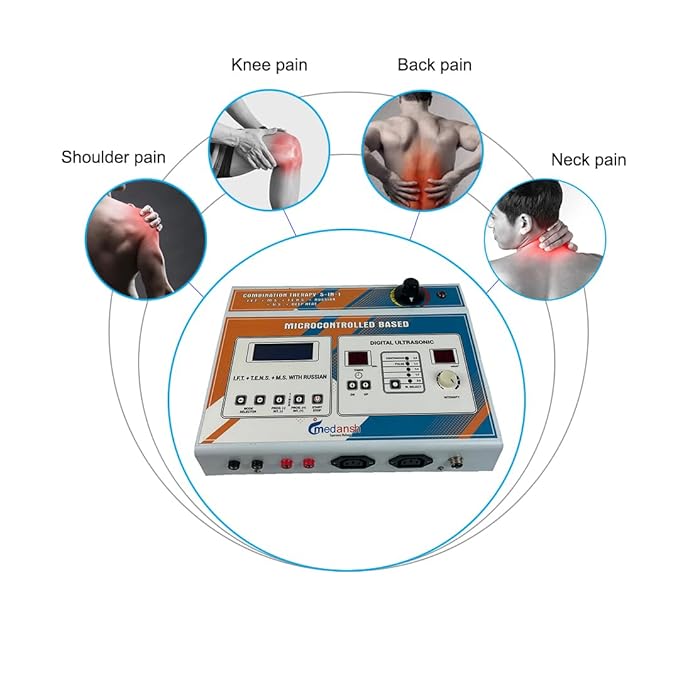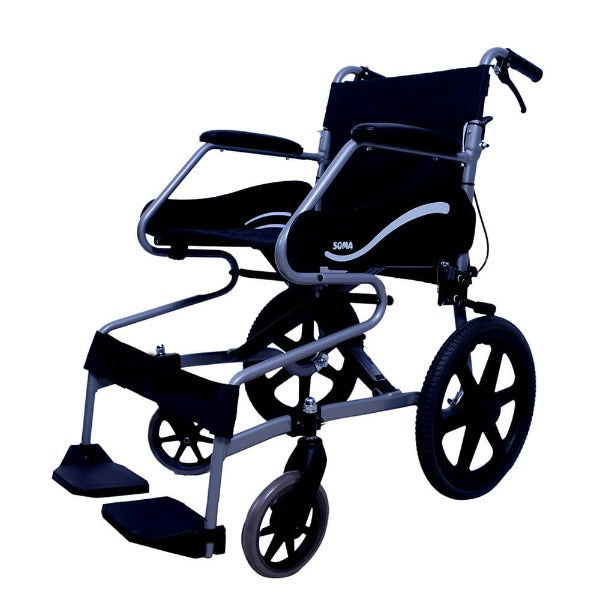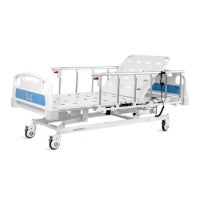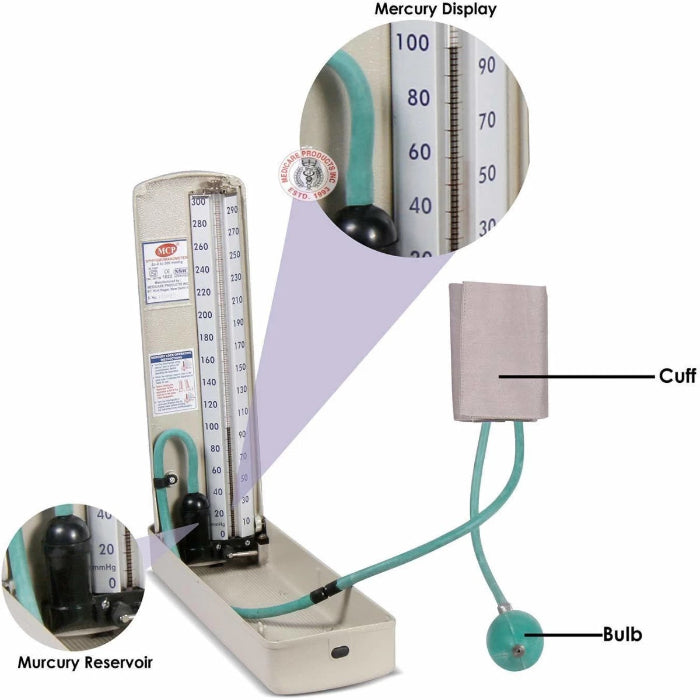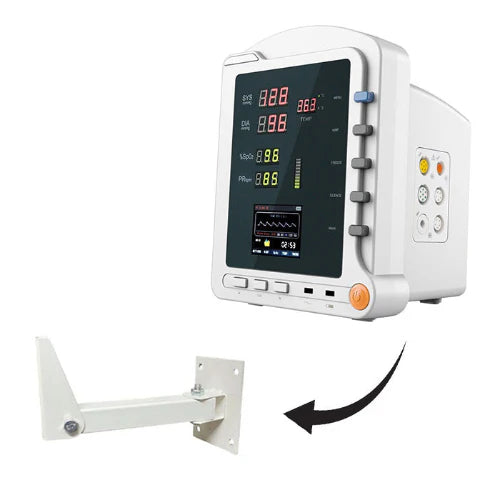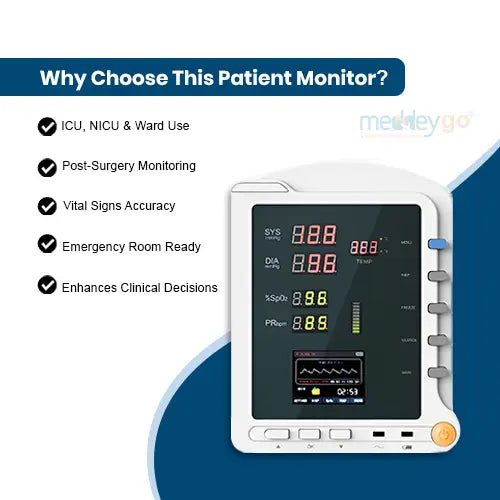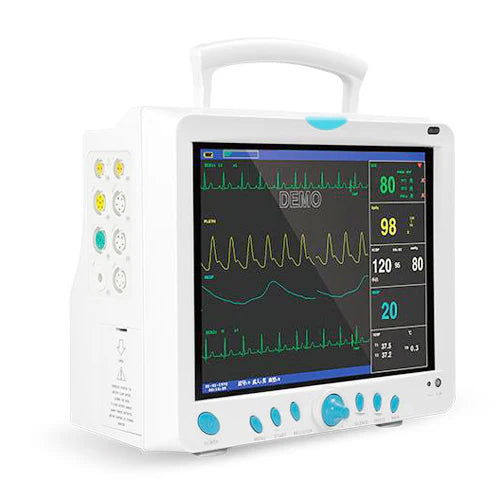Filter
24 products
Type: 3 para monitor
3 Para Bed Side Patient Monitor with 1 Year Warranty
Type: para monitor
5 Para Monitor SpO2, HR, NIBP, ECG, RESP, 2 Temp with Wall Mounted Stand With 1 Year Warranty
Type: 3 para monitor
3 Para Monitor NIBP, PR SpO2 with Stand with 1 Year Warranty
Type: para monitor
3 Para Monitor NIBP, PR SpO2 with Stand with 2 Years Warranty
Type: Devices
5 Para Monitor 12.1 Inch TFT without stand
Type: para monitor
3 Para Bed Side Monitor
Type: para
CONTEC CMS 9000 5 Para Monitor ECG, NIBP, Sp02, Pulse Rate, NIBP and TEMP
Type: para monitor
5 Para Bed Side Monitor with Basket Stand
Type: 5 para
5 Para Bed Side Monitor Aqua 12 with 2 Years Warranty
Type: Device
3 Para Bed Side Patient Monitor with Wall Mounted Stand
Type: Devices
Multi Purpose Para Monitor Flight 8000
Type: Devices
Multi Purpose Para Monitor Flight 8000 with ETCO2
Type: Devices
Multi Purpose Para Monitor Flight 9000 with ETCO2
Type: Devices
Multi Purpose Para Monitor Flight 9000
Type: para monitor
Multiparameter Patient Monitor 9000 with ETCo2 Monitor
Collection:
Patient Monitor
Explore Our Wide Range of ICU Monitors – Advanced Patient Monitoring Solutions for Critical Care
Introduction
In modern healthcare, continuous monitoring of patients is vital, especially in critical care units. Because timely detection of even the slightest change can save lives, the ICU monitor has become an indispensable tool in hospitals, nursing homes, and emergency departments. While traditional methods involved manual checks, technology has now ensured real-time accuracy, thereby reducing human error and improving patient outcomes.
What Is an ICU Monitor?
An ICU monitor, also known as a patient monitor, is a sophisticated device that tracks vital signs such as heart rate, blood pressure, oxygen saturation, temperature, and respiratory rate. Since critical patients require constant observation, these monitors provide 24/7 data with audible and visual alerts.
Although the term “patient monitor” is widely used, the ICU monitor represents the advanced category specifically designed for intensive care units, operating rooms, and emergency setups. Because of their accuracy, durability, and reliability, these devices form the backbone of modern critical care.
Why ICU Monitors Are Essential in Critical Care
Continuous Monitoring
Since patients in intensive care can deteriorate within seconds, thats ensure constant tracking, thereby alerting staff immediately.
Early Warning System
Because even subtle fluctuations in vitals indicate potential complications, these act as early warning systems, allowing timely interventions.
Multi-Parameter Observation
Unlike basic devices, ICU monitors track multiple parameters simultaneously, thus ensuring a holistic view of the patient’s condition.
Integration With Hospital Systems
Most modern models integrate with central monitoring systems, so doctors can track patients remotely across departments.
Types of ICU Monitors
Bedside Monitors
Placed beside the patient’s bed, these devices continuously track vital signs. Because of their accessibility, they are widely used in ICUs.
Portable Monitors
Since mobility is sometimes essential during patient transfers, portable ICU monitors offer reliable monitoring on the go.
Multiparameter Monitors
These advanced systems track ECG, SpO₂, NIBP, temperature, and even invasive pressure simultaneously, making them ideal for critical cases.
Neonatal and Pediatric Monitors
Because infants and children require different configurations, specialized monitors ensure safe and accurate readings.
Key Features of ICU Monitors
- High-Resolution Display: Ensures clear visibility of multiple parameters at once.
- Multi-Channel Tracking: Allows observation of ECG, respiration, blood pressure, and SpO₂.
- Audible and Visual Alarms: Alerts staff during critical fluctuations.
- Data Storage: Enables trend analysis for better treatment planning.
- Connectivity: Integrates with hospital systems for centralized monitoring.
- Battery Backup: Ensures uninterrupted operation during power outages.
- User-Friendly Interface: Designed for quick access in emergencies.
Since these features directly impact patient safety, hospitals always prefer monitors that balance technology with reliability.
How to Use ICU Monitors Effectively
Step-by-Step Guide
- Connect electrodes, cuffs, or sensors to the patient according to instructions.
- Power on the monitor and calibrate settings.
- Select the parameters required for continuous observation.
- Monitor readings and respond promptly to any alarms.
- Store or transmit data for further medical evaluation.
Clinical Applications
- ICU Care: Continuous monitoring of critically ill patients.
- Operating Rooms: Real-time tracking during anesthesia and surgery.
- Emergency Departments: Rapid assessment of patients with trauma or cardiac arrest.
- Post-Operative Recovery: Ensuring stability during immediate recovery stages.
- Neonatal Intensive Care Units: Tracking vital signs of premature babies.
Because of their versatility, ICU monitors are suitable for almost every hospital department.
Benefits of ICU Monitors
- Provides real-time monitoring for timely interventions
- Reduces the risk of human error in critical care
- Enhances patient safety and treatment outcomes
- Offers multi-parameter tracking for complete analysis
- Supports long-term data storage for research and planning
- Portable options enable safe patient transfers
- Assures 24/7 reliability with built-in alarms
Summary
- Continuous, real-time patient monitoring
- Designed specifically for intensive care units
- Available in bedside, portable, and multi-parameter models
- Equipped with alarms, data storage, and connectivity
- Suitable for adult, pediatric, and neonatal patients
- Improves outcomes through early detection
Frequently Asked Questions
What is the difference between a patient monitor and an ICU monitor?
Although all ICU monitors are patient monitors, ICU versions are more advanced, offering multiple parameter tracking and continuous reliability.
Which parameters does an ICU monitor measure?
Most models measure ECG, heart rate, oxygen saturation, respiratory rate, temperature, and blood pressure.
Can ICU monitors be used outside the intensive care unit?
Yes, portable models are frequently used in ambulances, emergency departments, and post-operative recovery units.
How accurate are ICU monitors?
Because they are designed for critical care, they offer high accuracy and reliability, often exceeding that of basic patient monitors.
How do ICU monitors improve outcomes?
By providing real-time data and alarms, they help doctors intervene quickly, thereby preventing complications and improving survival rates.
Do ICU monitors require special training?
While basic functions are user-friendly, healthcare staff usually receive training to interpret data and respond to alerts effectively.
Why Choose MeddeyGo for ICU Monitors?
At MeddeyGo, we understand that critical care requires uncompromised accuracy. Therefore, we provide ICU monitors that combine cutting-edge technology with ease of use. Because every hospital and clinic has unique requirements, our collection includes models suited for intensive care, emergency rooms, and pediatric units.
- Extensive Range: From bedside to portable multiparameter monitors.
- Reliable Quality: Products sourced from trusted manufacturers.
- Competitive Pricing: Ensuring affordability without compromising standards.
- Trusted by Professionals: Used by hospitals, nursing homes, and clinics across India.
- Seamless Shopping: Easy ordering, secure payment, and timely delivery.
When you choose MeddeyGo, you are not simply purchasing equipment—you are investing in patient safety, precision, and trust.


